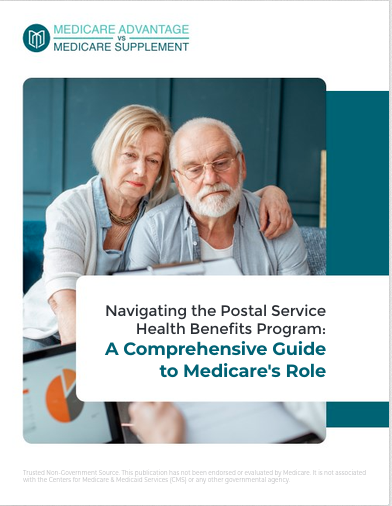Key Takeaways
- Medicare has four main parts: A (hospital insurance), B (medical insurance), C (private plans), and D (prescription drug coverage).
- Each part has different coverage, costs, and enrollment rules, so it’s important to choose wisely based on your healthcare needs.
The Four Parts
Here’s something you might not hear often: Medicare isn’t as complicated as it seems—once you break it down. If you’ve ever felt overwhelmed by Medicare’s many parts, rules, and costs, you’re not alone. But the good news? Understanding it doesn’t require a PhD.
Medicare is divided into four parts—A, B, C, and D—and each one covers different healthcare services. Some are automatic, some require you to sign up, and others come with extra costs. By the end of this guide, you’ll finally understand what you’re paying for and why.
Medicare Part A: The Foundation of Hospital Coverage
What It Covers
Medicare Part A is often called “hospital insurance” because it primarily covers:
- Inpatient hospital stays
- Skilled nursing facility (SNF) care (short-term rehab, not long-term nursing home stays)
- Hospice care
- Limited home health services
How Much It Costs
Many people get Part A premium-free if they or their spouse worked and paid Medicare taxes for at least 10 years. If not, you might have to pay a monthly premium.
However, even if you get Part A without a premium, it’s not entirely free—there are deductibles and coinsurance. For example, if you’re admitted to the hospital, you must pay a deductible before Medicare starts covering costs.
Enrollment Rules
You’re automatically enrolled in Part A at age 65 if you’re already receiving Social Security benefits. If not, you’ll need to sign up during your Initial Enrollment Period (IEP), which starts three months before your 65th birthday and lasts seven months total.
Medicare Part B: Your Doctor and Outpatient Services
What It Covers
Medicare Part B, also called “medical insurance,” covers:
- Doctor visits
- Outpatient hospital care
- Preventive services (like screenings and vaccines)
- Durable medical equipment (DME)
- Ambulance services
How Much It Costs
Unlike Part A, almost everyone pays a premium for Part B. The amount depends on your income, and it can increase if you don’t sign up when you’re first eligible.
In addition to the monthly premium, Part B also has:
- An annual deductible
- Coinsurance (typically 20% of the Medicare-approved amount for services)
Enrollment Rules
You must actively enroll in Part B if you’re not automatically signed up. If you delay enrolling and don’t have other coverage (like from a job), you may have to pay a late enrollment penalty for life.
Medicare Part C: The All-in-One Alternative (Medicare Advantage)
What It Covers
Medicare Part C, known as Medicare Advantage, is an alternative way to get your Medicare benefits. These are private insurance plans that bundle Part A, Part B, and usually Part D (prescription drugs). Many plans also include extras like:
- Vision and dental coverage
- Hearing aids
- Fitness programs
How Much It Costs
Costs for Part C vary by plan, but you still must pay your Part B premium. Beyond that, there may be additional monthly costs, copays, and deductibles, depending on the plan you choose.
Enrollment Rules
You must be enrolled in both Part A and Part B before joining a Medicare Advantage plan. You can sign up:
- During your Initial Enrollment Period (when you first qualify for Medicare)
- During the Annual Enrollment Period (AEP) from October 15 to December 7
- During the Medicare Advantage Open Enrollment Period from January 1 to March 31 (if you want to switch plans or return to Original Medicare)
Medicare Part D: Prescription Drug Coverage
What It Covers
Medicare Part D helps cover the cost of:
- Prescription medications
- Some vaccines not covered by Part B
Each Part D plan has a formulary, or list of covered drugs, which varies by plan.
How Much It Costs
Like Part C, the cost of Part D depends on the plan you choose. You’ll typically pay:
- A monthly premium
- A deductible (some plans have none)
- Copays or coinsurance for each prescription
The Coverage Gap (Donut Hole)
Medicare Part D has a coverage gap, often called the donut hole. In 2025, once your drug costs reach a certain amount, you’ll pay no more than 25% of the cost of your medications. Once you spend enough to reach catastrophic coverage, you’ll pay very little for the rest of the year.
Enrollment Rules
You can sign up for Part D:
- During your Initial Enrollment Period
- During the Annual Enrollment Period (October 15 – December 7)
If you don’t enroll when you’re first eligible and don’t have other drug coverage, you may face a late enrollment penalty that never goes away.
How to Choose the Right Medicare Coverage
With so many options, how do you decide? Here are some key factors to consider:
✅ Do you need extra benefits? If you want dental, vision, and hearing coverage, Medicare Advantage (Part C) might be a good fit.
✅ Do you take prescription drugs? If so, make sure you choose a Part D plan that covers your medications.
✅ Do you prefer lower monthly costs or fewer out-of-pocket expenses? Original Medicare (Parts A & B) with a Medicare Supplement (Medigap) plan can help cover some of the costs Medicare doesn’t pay.
Remember: Medicare isn’t one-size-fits-all. The best plan for you depends on your health, budget, and personal preferences.
Making Sense of Medicare’s Four Parts
Medicare might seem complicated, but at its core, it’s just four parts working together to cover different aspects of healthcare:
- Part A handles hospital stays.
- Part B covers doctor visits and outpatient care.
- Part C (Medicare Advantage) bundles A, B, and often D into one private plan.
- Part D helps pay for prescription drugs.
Understanding what each part covers—and what you’ll pay—can help you make informed choices and avoid costly mistakes. With this knowledge, you’re well on your way to getting the most out of your Medicare coverage.










